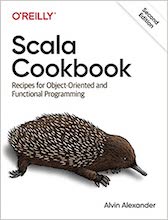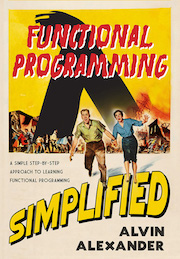Java example source code file (ExecPermission.java)
The ExecPermission.java Java example source code
/*
* Copyright (c) 2000, 2012, Oracle and/or its affiliates. All rights reserved.
* DO NOT ALTER OR REMOVE COPYRIGHT NOTICES OR THIS FILE HEADER.
*
* This code is free software; you can redistribute it and/or modify it
* under the terms of the GNU General Public License version 2 only, as
* published by the Free Software Foundation. Oracle designates this
* particular file as subject to the "Classpath" exception as provided
* by Oracle in the LICENSE file that accompanied this code.
*
* This code is distributed in the hope that it will be useful, but WITHOUT
* ANY WARRANTY; without even the implied warranty of MERCHANTABILITY or
* FITNESS FOR A PARTICULAR PURPOSE. See the GNU General Public License
* version 2 for more details (a copy is included in the LICENSE file that
* accompanied this code).
*
* You should have received a copy of the GNU General Public License version
* 2 along with this work; if not, write to the Free Software Foundation,
* Inc., 51 Franklin St, Fifth Floor, Boston, MA 02110-1301 USA.
*
* Please contact Oracle, 500 Oracle Parkway, Redwood Shores, CA 94065 USA
* or visit www.oracle.com if you need additional information or have any
* questions.
*/
package com.sun.rmi.rmid;
import java.security.*;
import java.io.*;
import java.util.*;
/**
* The ExecPermission class represents permission for rmid to execute
* a specific command to launch an activation group. An ExecPermission
* consists of a pathname of a command to launch an activation group.
* <P>
* Pathname is the pathname of the file or directory to grant rmid
* execute permission. A pathname that ends in "/*" (where "/" is
* the file separator character, <code>File.separatorChar) indicates
* all the files and directories contained in that directory. A pathname
* that ends with "/-" indicates (recursively) all files
* and subdirectories contained in that directory. A pathname consisting of
* the special token "<<ALL FILES>>" matches <bold>any file.
* <P>
* Note: A pathname consisting of a single "*" indicates all the files
* in the current directory, while a pathname consisting of a single "-"
* indicates all the files in the current directory and
* (recursively) all files and subdirectories contained in the current
* directory.
* <P>
*
*
* @author Ann Wollrath
*
* @serial exclude
*/
public final class ExecPermission extends Permission
{
/**
* UID for serialization
*/
private static final long serialVersionUID = -6208470287358147919L;
private transient FilePermission fp;
/**
* Creates a new ExecPermission object with the specified path.
* <i>path is the pathname of a file or directory.
*
* <p>A pathname that ends in "/*" (where "/" is
* the file separator character, <code>File.separatorChar) indicates
* a directory and all the files contained in that directory. A pathname
* that ends with "/-" indicates a directory and (recursively) all files
* and subdirectories contained in that directory. The special pathname
* "<<ALL FILES>>" matches all files.
*
* <p>A pathname consisting of a single "*" indicates all the files
* in the current directory, while a pathname consisting of a single "-"
* indicates all the files in the current directory and
* (recursively) all files and subdirectories contained in the current
* directory.
*
* @param path the pathname of the file/directory.
*/
public ExecPermission(String path) {
super(path);
init(path);
}
/**
* Creates a new ExecPermission object with the specified path.
* <i>path is the pathname of a file or directory.
*
* <p>A pathname that ends in "/*" (where "/" is
* the file separator character, <code>File.separatorChar) indicates
* a directory and all the files contained in that directory. A pathname
* that ends with "/-" indicates a directory and (recursively) all files
* and subdirectories contained in that directory. The special pathname
* "<<ALL FILES>>" matches all files.
*
* <p>A pathname consisting of a single "*" indicates all the files
* in the current directory, while a pathname consisting of a single "-"
* indicates all the files in the current directory and
* (recursively) all files and subdirectories contained in the current
* directory.
*
* @param path the pathname of the file/directory.
* @param actions the action string (unused)
*/
public ExecPermission(String path, String actions) {
this(path);
}
/**
* Checks if this ExecPermission object "implies" the specified permission.
* <P>
* More specifically, this method returns true if:<p>
* <ul>
* <li> p is an instanceof ExecPermission,
Other Java examples (source code examples)Here is a short list of links related to this Java ExecPermission.java source code file: |
 The search page
The search page Other Java source code examples at this package level
Other Java source code examples at this package level Click here to learn more about this project
Click here to learn more about this project
